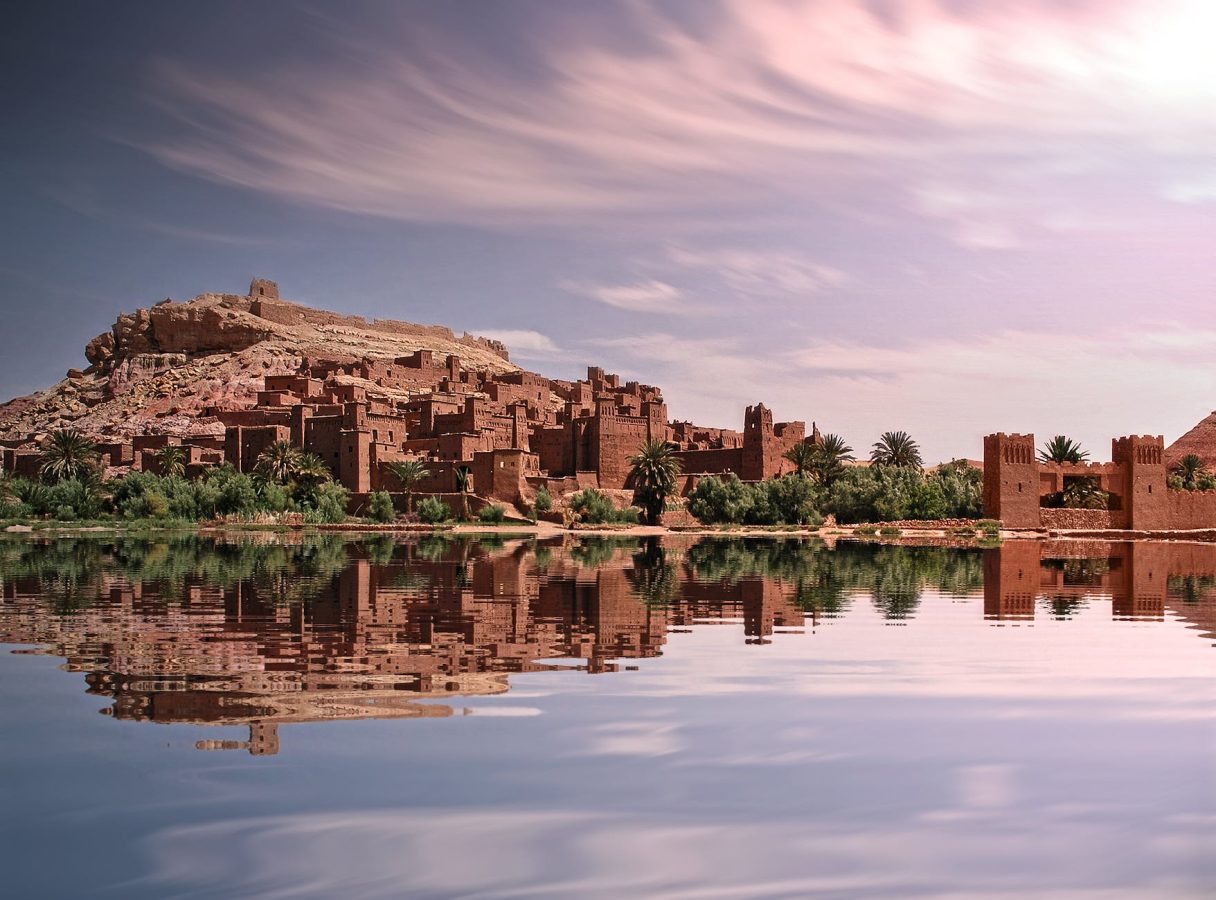Before I travel to a new destination, I like to know a little bit more about its past. So before you & we go visit Morocco, I’d like to present you a short introduction to its eventful history.
Introduction to the history of Morocco: A special place
First of all, it’s important to know Morocco is located in a special spot in the world. Not only in the high north of the African continent, but also nearest to the European continent.
Crossing the Strait of Gibraltar – for the Ancient Greeks the “Herculean” gateway to the rest of the world – brings you to Spain (or the UK of course, when you chose to visit Gibraltar).
In fact, at this world famous spot the two continents can see each other almost permanently. As I witnessed standing on the Rock of Gibraltar during my recent visit to Spain & the UK enclave.

- Where relevant I will name the historical monuments & attractions you can visit throughout the country. Standing witness for the history of Morocco.
- Like for example – after this short introduction – the legendary Hercules Caves, a popular attraction near Tangier. Actually, highly regarded by some, less so by others (mainly because they consider it too small & overpriced).

Get Your Guide Travel platform
- IMPORTANT: Throughout this post & others you’ll find affiliated links provided by the affiliate marketing platform GetYourGuide & others. Links & ads that may help you plan your next trip to Morocco.
- If you click on them & buy a ticket for a museum, book a tour or rent a bike a small commission of your purchase will go to me (paid by the provider, without any extra cost to you).
- If you want to learn a little bit more about me, the blog writer, click on: Better call me Art.
History of Morocco: Origins
Berbers is a collective name for the indigenous inhabitants of North Africa, including Morocco.
- Actually the term “Berbers” derives from the Graeco-Roman word “Barbari”. They call themselves Amazighs (officially 30-40% of the actual population). Most of them probably descended from nomadic tribes who wandered North Africa long before their settlement.
The first tribes probably settled themselves in the area almost 12,000 years ago, the birthdate of agriculture. Through time the smaller Berber communities started to grow & became the first local kingdoms in the area.
However, much earlier human traces are found in Morocco.
- Just recently (2017) a group of scientists discovered that “Neanderthalers” bones & tools – found in the coastal area of Jebel Irhoud in the 1960s – actually belonged to Homo Sapiens. More surprisingly even was the fact that they are considered at least 300,000 years old. Pushing the timeline of the presence of our species in North Africa back more than 100,000 years.
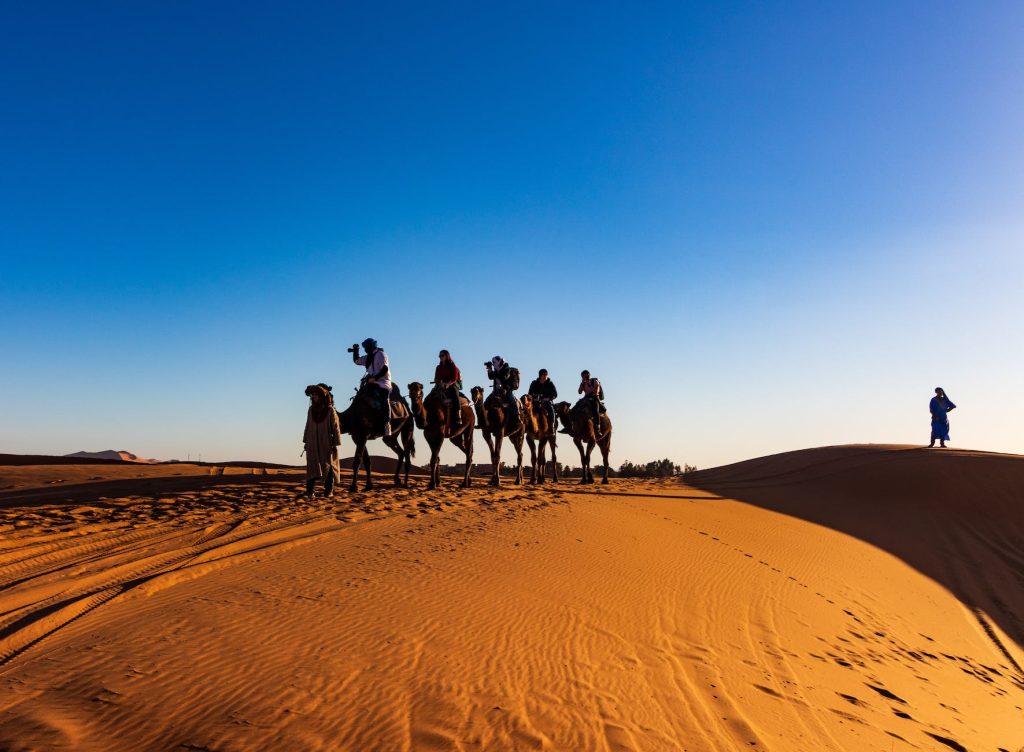
(Photo by Tomáš Malík on Pexels.com).
History of Morocco: Foreign visitors
The Phoenicians
The first real “outsiders” who visited the Berber territory were the Phoenicians – who from the 9th century BC started exploring the Moroccan coast. Initially establishing trading posts there (in or near present-day Tangier, Essaouira & Rabat).
- The Phoenicians came from the east, the Levant. The city-state of Tyre was the core of their empire, in nowaday Lebanon.
Little by little these temporary settlements were converted into permanent ones as the presence of the Eastern merchants grew. More so, after the Phoenicians founded nearby cities on the North African & Iberian coast, like Carthage (in modern-day Tunisia), and Málaga (in Southern Spain).
From their trading posts at the coast the Phoenicians/Cathaganians dealt with the inland Berber kingdoms. That is, until the fall of Carthage in 146 BC at the hands of the Romans.
The Romans
After serving many years as a client kingdom, a big chunk of modern-day “Morocco” officially became part of the Roman Empire in 40 AD. A process which took four more years to finish because of fierce resistance in many parts of the Northafrican region against the European invaders.
The Romans called this particular province Mauretania Tingitana, the land of the Mauri. Represented by a governor or praeses appointed by Rome.
Although the Roman presence was mostly limited to coastal and more urbanized areas, the whole region was Romanized & also converted to Christendom.
- Increasingly so after the Roman Emperor Constantine the Great’s conversion to Christendom in 323 AD.
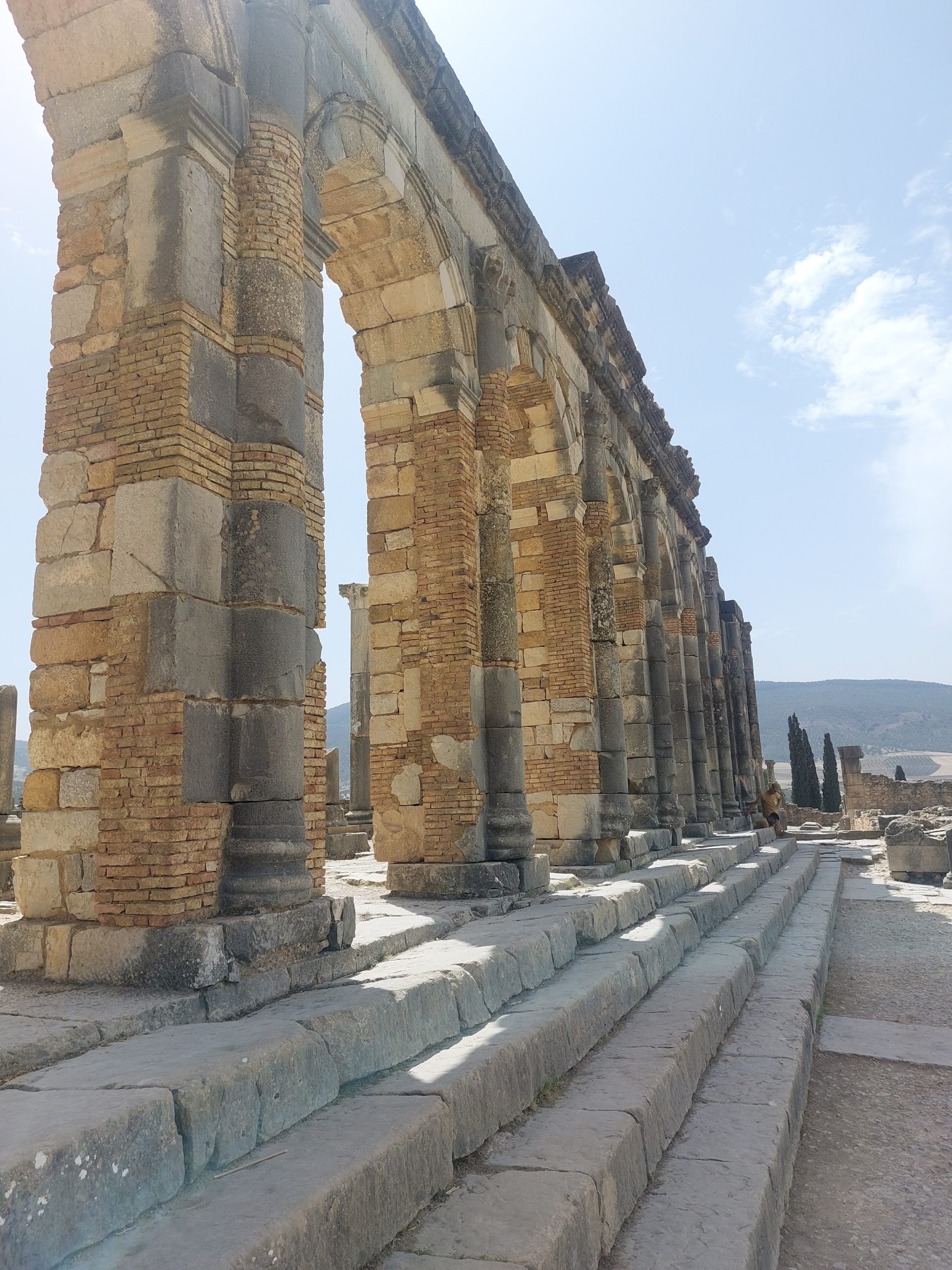
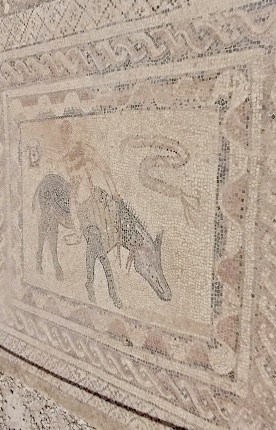
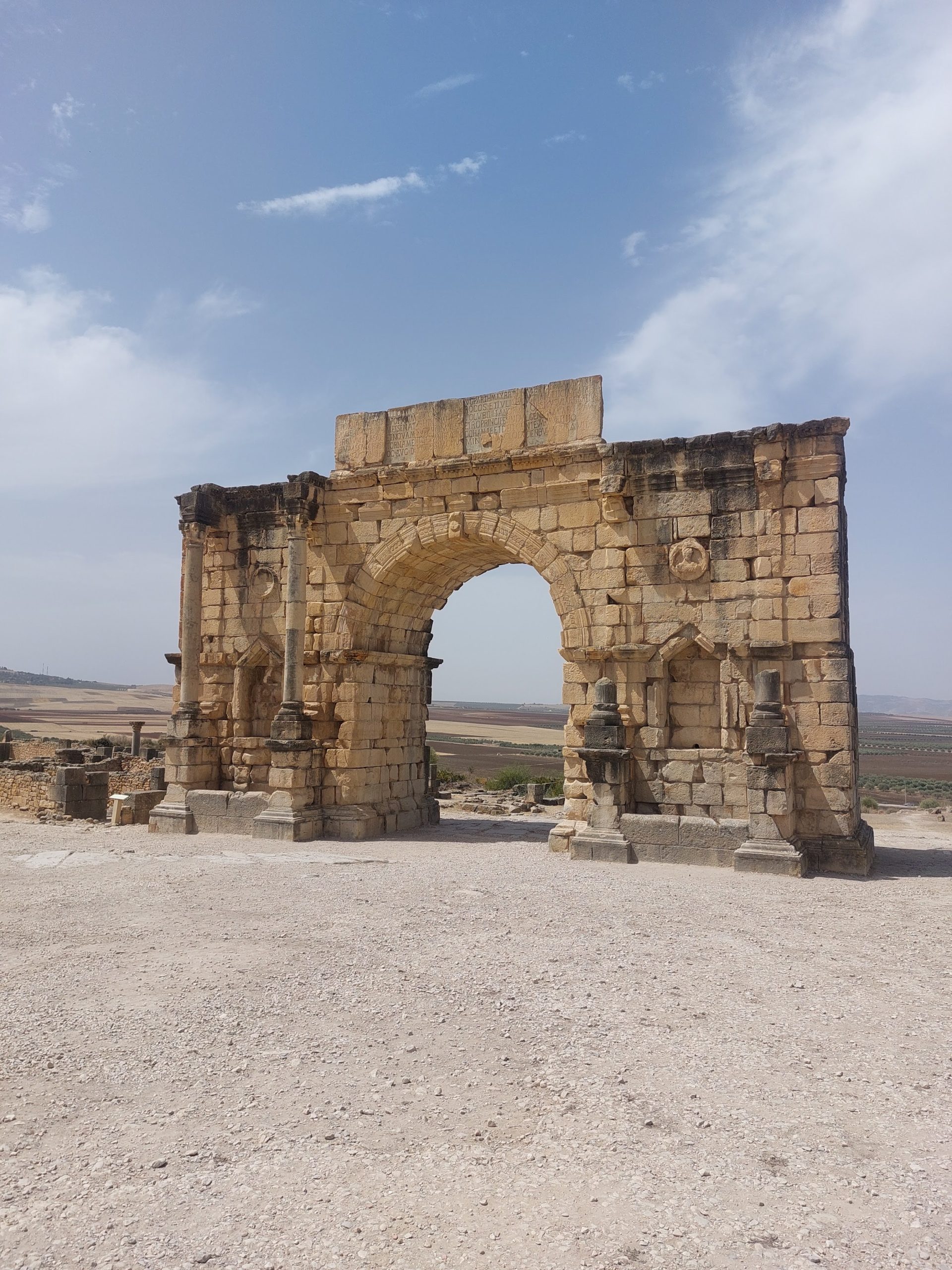
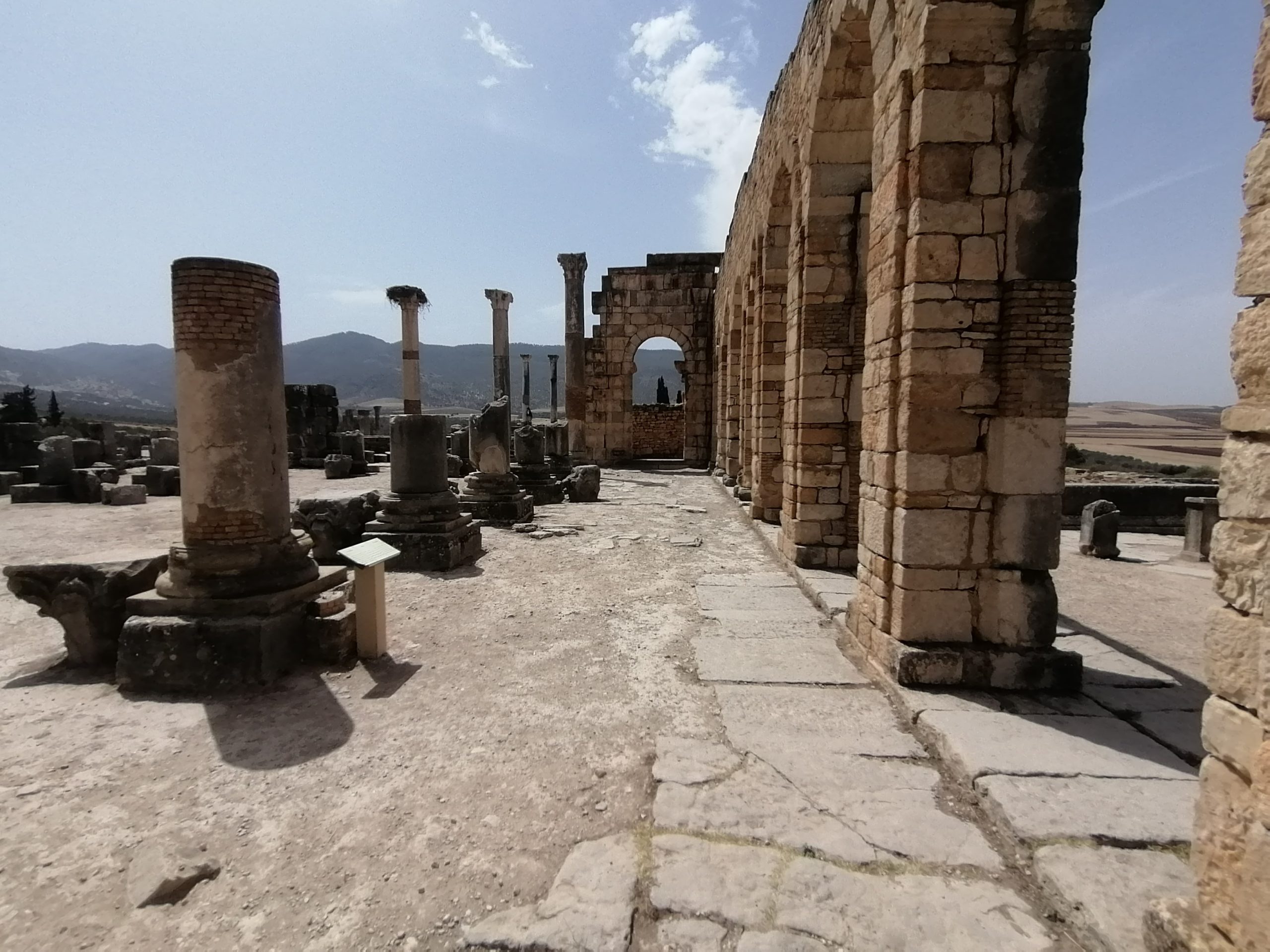
When, later on, their empire declined, the Romans started to withdraw from the outlying territories first. Providing an excellent opportunity for the Nordic tribes to invade the Northafrican region. In the first half of the 5th century the Germanic Vandals crossed over from Spain, mainly to plunder.
However, their presence didn’t last long. First of all because of the local resistance, but also because the Roman Emperor of the East, the Byzantine Emperor Justinian I, decided to reconquer the former Northafrican provinces – accomplished in 534 AD.
The Arabs
A revolutionary change came over North Africa at the beginning of the 7th century when Arabs conquered the region. The conquest was led by the Umayyad dynasty – rooted in the Middle East (“Great Syria”) – who replaced the Byzantine rule.
The Umayyads reached modern-day Morocco at the beginning of the 8th century. Bringing with them their culture, language as well as their religion. Although the Arab invaders saw conversion to Islam as an important goal, they didn’t force the local inhabitants – Christians & Jews – to do so.
- The Arabs called the western part of North Africa Al-Maghrib – the Maghreb. Which means something like “The land of the setting sun” or “the land of the West’.
Although initially the natives – again – rebelled against the latest visitors, over time they merged with them. Converting to the Islamic faith & even fighting side by side with them to conquer more territory.
- The Arabs didn’t stop in what’s nowaday Morocco, but soon (711 AD) – assisted by thousands of Berber soldiers – crossed over the Strait of Gibraltar to the Iberian peninsula. Soon reaching & crossing over the Pyrenees into France (Gaul), which they temporarily occupied.
History of Morocco: Islamic power play
However, the Arab makeover nor presence was static. Constant rivalry within the Arab world would bring dynasty after dynasty to the throne. In their power centers, as well as the outer regions, like North Africa.
- The new rulers permanently tried to maintain a good contact with the local Berber elite & inhabitants, who – depending their own gains & loyalties – supported or rebelled against them.
In the end, every rival elite-family would try to put its own mark on the history of North Africa, including Morocco.
A good example is the change of capital through Morocco’s history. From Fez to Marrakech, to Fez again, Marrakech, Meknes temporarily, and Rabat in the end. Nowadays all these places are called the Imperial Cities.
The Idrisid Dynasty
After the Umayyad domination, the Idrissides were next – a family which earlier on had fled the Middle East. They were a so-called Sharifian family. Meaning, they were direct descendants of the prophet Muhammad.
In 789 AD they founded and ruled the first royal dynasty of Morocco.
- Choosing as its first capital, Fez.
Their first ruler was Idris ibn Abd Allah – a direct descendant of the Islamic Prophet Muhammed. However, he was murdered soon after his ascendency, on instructions of the Caliph of Bagdad who feared his rival’s popularity in the far West. He was succeeded by his posthumous son, Idris bin Idris.
- Both – father & son – are venerated as founders to this day. We can find the mausoleum of Idriss I in Moulay Idriss Zerhoun – near Fez – and that of Idriss II in the old medina of Fez itself.
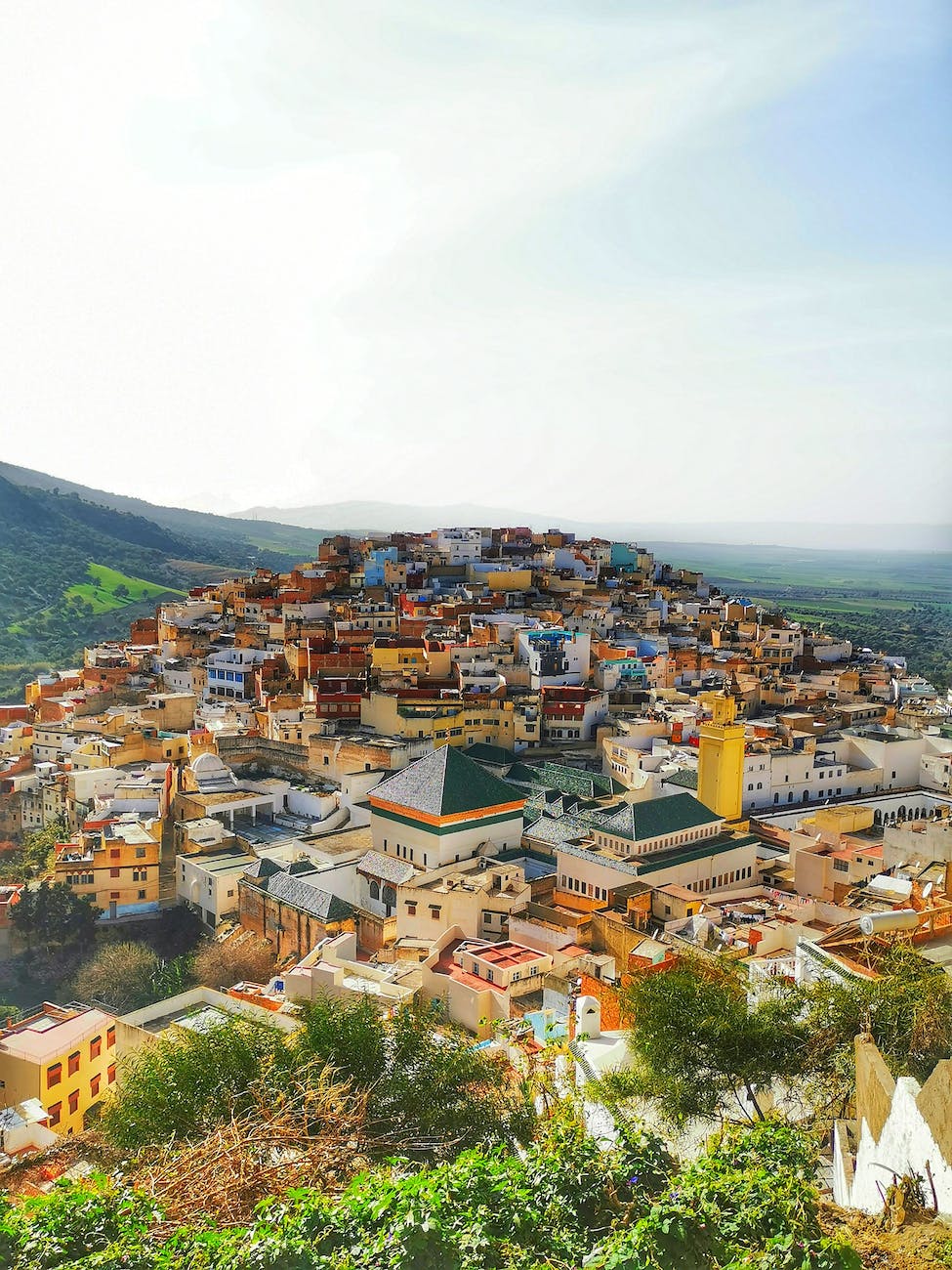
- Besides these holy places, we owe the Idrisid dynasty – amongst other historical buildings – also the Mosque of al-Qarawiyyin, nowadays a university – for some the oldest in the world, since 859 AD – as well as the Mosque of the Andalusians in Fez.
Downfall
After Idris II’s death in 828 AD the history of their small empire took a bad turn. First of all, because the territory was divided among Idris’ many sons, who soon started fighting each other. Secondly, because a rivalry broke out between the neighbouring Islamic dynasties – foremost the Fatimids & the Umayyads. Mainly concerning the control of the major trade routs through Morocco.
- Besides being a place for many refugees throughout the Islamic world, Fez in these years was on many rulers’ wishlist to conquer. Mainly because of its central location on the trade routes from Central Africa to the Maghreb & beyond. Like Córdoba, in modern-day Spain, at the time the Umayyad capital.
Just before the end of the first millenium the dynasty of the Idrissides made for a new one. A local one this time.

History of Morocco: The Berber Empires
The Almoravid Dynasty
The Almoravids emerged from a coalition of nomadic Berber tribes who lived in the southern deserts.
In the second half of the 11th century they managed to conquer & unify several loose states and diverse population groups in North Africa, as well as in Southern Europe. Resulting in an enormous empire, stretching from the eastern frontiers of the Maghreb to the northern borders of Andalusia (Al-Andalus) on the Iberian peninsula.
- The Almoravids founded a new capital, Marrakech (in or around 1070 AD). City, which in the end provided the country Morocco its name.

Unifying so big a territory is still seen as a great accomplishment in the history of Morocco. Although it didn’t mean of course there weren’t enemies in- & outside their empire.
Opposition within the borders came mostly from people who considered the Almoravids too fundamentalist. Considering them fanatics who – in the name of Allah – primarily wanted to conquer more & more territory.
Besides that, their leaders wanted the population to live by very strict rules -banning all kinds of luxuries & music. Although many people agreed with these new laws, not everybody did.
The fight for Andalusia
Because of their mission to conquer neighboring land, the Almoravids had enemies on every border. Certainly in Iberia where they had to defend themselves constantly against attacks from the Christian kingdoms to the north.
- At the Battle of Sagrajas (1086 AD), the Almoravids won an important victory, halting the Christian advance southwards for centuries.

- Although they only ruled for less than a century, the Almoravids left Morocco several monumental marks. A good example is the beautiful Almoravid Qubba (pavilion), which you can still admire in Marrakech.
The Almoravid dynasty lasted only shortly for various reasons. Mainly though, because of a locally rivalling Islamic group who took over around the middle of the 12th century.
The Almohad Caliphate
The Almohad movement was founded in the High Atlas mountains (Central Morocco). Inspired by the scholar Ibn Tumart. Although even more fundamentalist than the Almoravids – under them, for example, women were obliged to go veiled in public – the movement soon managed to attract many followers in & around Marrakech.
- The Almohads maintained Marrakech as their capital. For a short period though there were plans to appoint a new one, namely Rabat. Although this plan didn’t work out, Rabat became Morocco’s capital many years later (in 1955), until today.
One of the biggest supporters of the movement was Abd al Mu’min, who – after the death of the spirtual leader – converted the movement into the Almohad Caliphate. Also becoming its first caliph between 1133 and 1163.
Under his leadership the Almohads built a strong empire. Not only in size – expanding their territory even more in North Africa & Southern Europe – but also culturally & intellectually. In many respects, Morocco in this period experienced its first peak.
- Besides the architectural treasures in Morocco – like the Kutubiyya Mosque in Marrakech – the Almohads left several others in neighboring countries.

- Other famous examples though are the sky-high Giralda & the Golden Tower – the last one overlooking the Guadalquivir River – in Seville, Spain. A beautiful city I visited a few years ago. (For more info on Seville, go to: Seville, Spain.)

Almohads’ downfall
Although the Almohads – more than earlier dynasties in the history of Morocco – left many marks all over their empire, their reign also ended after just a century. Losing their power as fast as it had arrived.
This happened mainly because of the resistance of rival Islamic groups in Africa, but also the Christian enemies in Europe. In the first half of the 13th century the Iberian armies managed to reconquer big parts of Spain – including most of Andalusia. The only exception was Granada in the south, led by the Nasrid Dynasty.
- While visiting Granada, we could witness for ourselves why the Nasrid Palaces are still the main attraction within The Alhambra. To learn more, click on: Granada.
The Marinid Sultanate
The most effective resistance in the Maghreb itself, came from the Marinid Dynasty. As their predecessors, the Marinids were also a semi-nomadic Berber tribe.
Under their leader Abu Yahya they took over – officially – from the Almohads in 1248 AD, after capturing Fez.
- When the Marinids captured Fez, they inmediately made it their capital.
Initially they reigned over just a small territory and still had to conquer big parts of Morocco & the surrounding area to be able to call it a real empire. The Almohad capital Marrakech, for example, only fell 21 years later (in 1269 AD).
After this long battle though, their reign lasted for three centuries.
Although this was much longer than the Almoravid & Almohad Dynasties, they never reached the same prestige. First of all, because their power base in North Africa & Europe was smaller. Secondly, because they continually had to – besides the infighting within their own family – withstand fierce resistance in every corner of their domain.
They not only lost their last stronghold in Iberia (Algeciras, 1344), but also had to put up with a growing European presence on their African territory.
First off of all, Spain & Portugal, which started to raid the Moroccan shore and even managed to conquer several coastal settlements. The first being Ceuta, which was occupied by Portugal (1415 AD), but nowadays is still owned by Spain – like an African Gibraltar.
Shared power: Marinids & Wattasids
During the last part of their reign, the Marinids had to share their power more & more with the related dynasty of the Wattasids.
Especially after the so-called Moroccan Revolution (1465 AD), when serious opposition against the Marinid ruler Abd al-Haqq II & his Jewish collaborators ended the Marinid-sit on the throne for good.
- The Watassids would rule the country until the Battle of Tadia (1554 AD), which they lost to the Saadi Dynasty (see below).
The Marinids/Wattasids also left Morocco many lasting monuments. Mostly in their capital Fez itself. Besides mosques, minarets, stronger city walls & gates, this period is best known for the quantity of “madrasas” that were built. Simply put, a school or “place of study”, generally in the Islamic faith & philosophy.
- In Fez you can still admire and visit several wonderful madrasas – like the Bou Inania Madrasa or else the Al-Attarine Madrasa – within the city’s Medina & others. Above the city you can still visit the Tombs of the Marinid kings. While in Rabat you’ll find the Chellah Necropolis (or Cemetry).
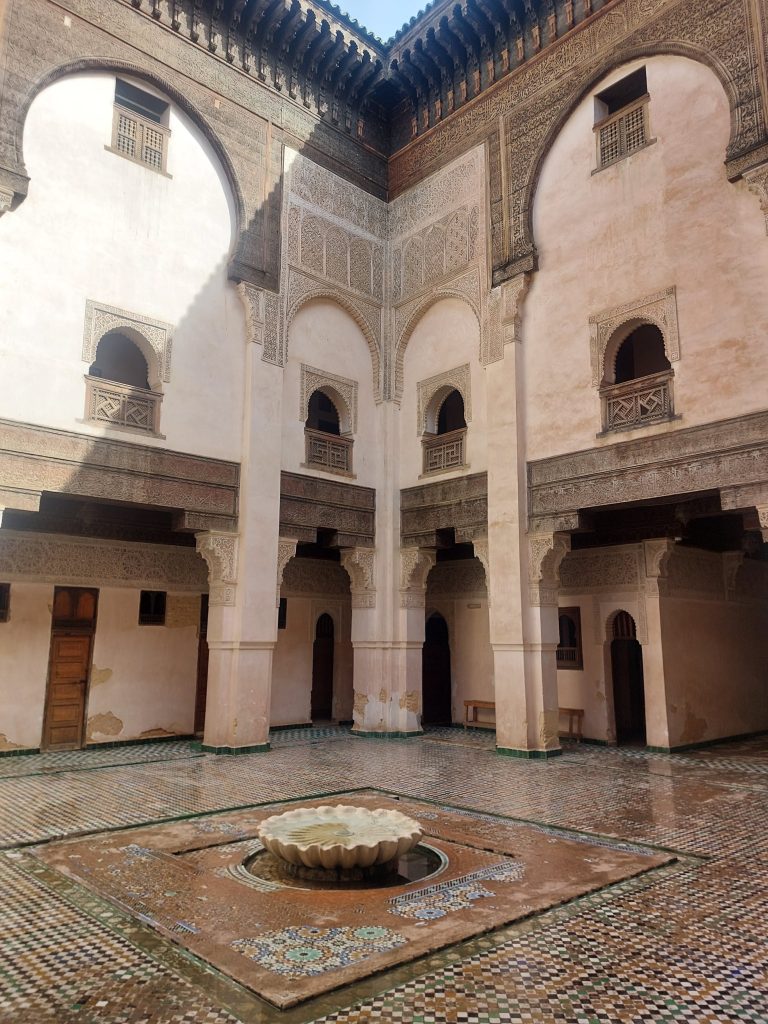
Islamic expulsion from Andalusia, Spain
During Wattasid period the Muslim World had to deal with the loss of Granada (1492) at the hands of the Catholic Kings Ferdinand & Isabella. Their last stronghold on the Iberian Peninsula.

Athough not belonging to the Wattasid empire, a sensitive moment in the history of Morocco, the Islamic Empires & in the end, the World at Large.
One of the biggest implications was the arrival of many refugees from Andalusia in North Africa. Not only Muslims, but also thousands of Jews who fled the Spanish Inquisition.
- The Jews already knew a long history in Morocco. After the fall of Granada though, their community grew even more. Proividing the country with the largest Jewish community within the Muslim World. That is, until after the Second World War, when many Jews left for Israel & other countries.
History of Morocco: Building a modern-day country
The Saadi Sultanate
The Saadians were – like the Idrissides – a Sharifian group, descendants of the prophet Muhammad. They took the Moroccan scepter over in 1554 AD.
- The Saadians ruled the country for over a century, until 1659 AD. During the first half Marrakech was their capital. From 1603 AD onwards, it was Fez.
The Saadi not only rebelled against the former rulers, but also organised a jihad against the foreign invaders – mainly the Portuguese. In the end managing to reconquer places like Agadir, Asilah & others.
- The final confrontation with the Portuguese took place in August 1578, during the Battle of Alcácer Quibir. Popularly known as the Battle of the Three Kings, because two local rulers, as well as the Portuguese King Sebastian I lost their lives.
Moreover, the Saadians managed to resist Ottoman expansion & conquer enormous parts of West Africa.
- Mainly because of the resistance against the powerful Ottoman Empire, many scholars view this time in the history of Morocco as essential for their national identity. A period wherein many people within the modern-day borders started to identify themselves as one country & one nationality.
As with every former ruling family though, it didn’t last. Confrontations at its borders, infighting within the Royal family (leading even to a Civil War), continuous rebellion from opposing groups were just a few of the events which caused the Saadi Empire to fall.
After the assasination of the last Saadian ruler in 1659, another Sharifian family eventually took over.
- The Saadians also left Morocco many architectural marks. Mainly in the Imperial cities, like for example the Western pavilion in the courtyard of the al-Qarawiyyin mosque/university in Fez. As well as the Ben Youssef Madrasa, the Mouassine Mosque & the Saadian Tombs in Marrakech.

The ‘Alawi or Alaouite Sultanete
The ‘Alawi Dynasty – also Alaouite Dynasty – is named after the kinship with Ali, the Prophet Muhammed’s son-in-law. They became the highest rulers of Morocco after years of instability, following the death of the last Saadi sultan.
With the conquest of Fez (1666) & Marrakech (1668) they managed to reunite Morocco. Soon organising the country again & leading it centrally.
- Initially Fez was chosen as their capital. However, this role was temporarily taken over by Meknes (1672-1727 AD) – which for this reason was rebuilt from the ground up. From 1955 until today the ‘Alawi capital is Rabat.
Their initial success couldn’t avoid that the ‘Alawis continuously had to fight internal resistance. As well as growing attempts from the European powers to interfere in Morocco’s politics & economics.
- Several Western superpowers wished to colonise the country. Mainly France, which in 1830 managed to colonise neighboring Algeria.
Surviving until today
Still though the ‘Alawis survived every setback and are leading the Kingdom of Morocco until today (although not always as independently as they wished, as we will see).
- The main monuments the ‘Alawi left us are found in the Imperial city of Meknes. Many of which are built in a Moorish style and are surrounded by high protective walls & monumental gates. Elsewhere though they left us other treasures, like the Cherratine Madrasa in Fez.
Besides these historical landmarks, the ‘Alawis also managed to strengthen many fortifications (kasbahs) throughout the country. Improved the living conditions for many, like the Jewish population who mostly lived in their own neighborhoods (mellahs). And modernised many harbors, to improve trade with other nations. So essential for the country.
- The best example being Essaouira, which at the end of 18th century had hundreds of European inhabitants. Which – by the way – couldn’t avoid that this particular city & others at the coast were still serving as an important pirate base, from which many merchant ships were raided & plundered.
History of Morocco: A French protectorate
When – during the 19th century – the power of the industrialised European nations grew, the pressure on other countries worldwide increased as well. Mainly in Asia & Africa. Morocco was no exception to the rule.
This pressure became considerably stronger after the neighboring country of Algeria was colonised in 1830 by France.
Morocco barely managed to hold its own against the French, but also had to deal with incursions of the Spaniards, who already had a long history with their neighboring country.
- Although England recognised the French & Spanish interests in Morocco – often acting as a mediator between the conflicting parties – Germany protested it. Mainly because they lacked colonies themselves.
The Treaty of Fez
External interference & internal rivalry in the end led to the Treaty of Fez (1912). A treaty which mainly confirmed French control over Morocco’s politics & economy. Making the country officially a protectorate of France. While other parts – mainly at the coast & in the southern Sahara-desert – would fall under the “protection” of Spain.
Riots broke out immediately after the treaty was signed. Mainly in the capital Fez, but also in other places – like Marrakech. Revolts which were crushed harshly by the French, but would continue on for years. Actually becoming the birthground for Moroccan nationalists & their future role in the struggle for independence.
- One of the consequences of the unrest in Fez was that the new ruler, Moulay Yusef – named by the French – decided to make Rabat the new capital of Morocco.
All in all, the French & Spanish domination of Morocco led to thousands upon thousands of immigrants. Mostly rich businessmen from European nations. Influencing the country in many ways. Not only politically & economically, but also culturally.
- This was surely the case for Tangier, which soon became – from 1923-1924 onwards – subjected to a special economic regime, giving it an international status as a free port.
Instead of being a positive thing though, it widened the gap between rich foreigners and poor natives & added fuel to the fire for the nationalist movement in Morocco. A movement which was led by their official ruler, Sultan Mohammed V. A man who felt too much like a puppet on a string.
Morocco during the Second World War
After the occupation of France (june 1940), Morocco was automatically controlled by Vichy France. A regime which collaborated with Nazi Germany.
However, after the Allies started to gain terrain in North Africa (at the end of 1942), many Moroccans switched sides & started to participate in Allied operations to defeat the Axis-powers. Not only in Africa, but also in Europe.
- Franco’s Spain – taking advantage of the confusing situation in Western Europe – shortly tried to expand their territory in Morocco, but soon contained its actions.
In January 1943 the US President Franklin D. Roosevelt and the British Prime Minister Winston Churchill met in Casablanca. Mainly to discuss the course of the war, but also to talk about the time thereafter – when Hitler was beaten.
Sultan Mohammed V wasn’t involved in these talks, but played a ceremonial part as a host. In this role, he saw a chance to express to Roosevelt his wish for Morocco’s independence after the war. Something the US President supported & immediately resulted in extra hope and motivation for the sultan & his Moroccan entourage to further their goals.
History of Morocco: Independent again
Although the French tried to avoid it, during the first half of 1956 Morocco became independent again.
- Only two coastal enclaves – Ceuta & Melilla – and some desert land in the south remained part of Spain.
With this historic moment the ‘Alawi ruler, Mohammed V decided to take the title of king instead of sultan.
- Officially he became head of a Constitutional Monarchy, although he – and his successors – would actually still have much more real power in comparison to his Royal colleagues in countries like Britain or the Netherlands for example.
At first, governing an independent Morocco wasn’t easy. Mainly because the economic grip of the former colonial masters on the country had been very strong. It took years to get the country going again. Something which repeated itself in almost all the world’s colonies who became independent after World War II.
Little by little though the country managed to modernise. In close connection with the Western world – who remained Morocco’s most important trading partner – but always in an Islamic context. Always having proponents as well as opponents in the country’s relation to the West.
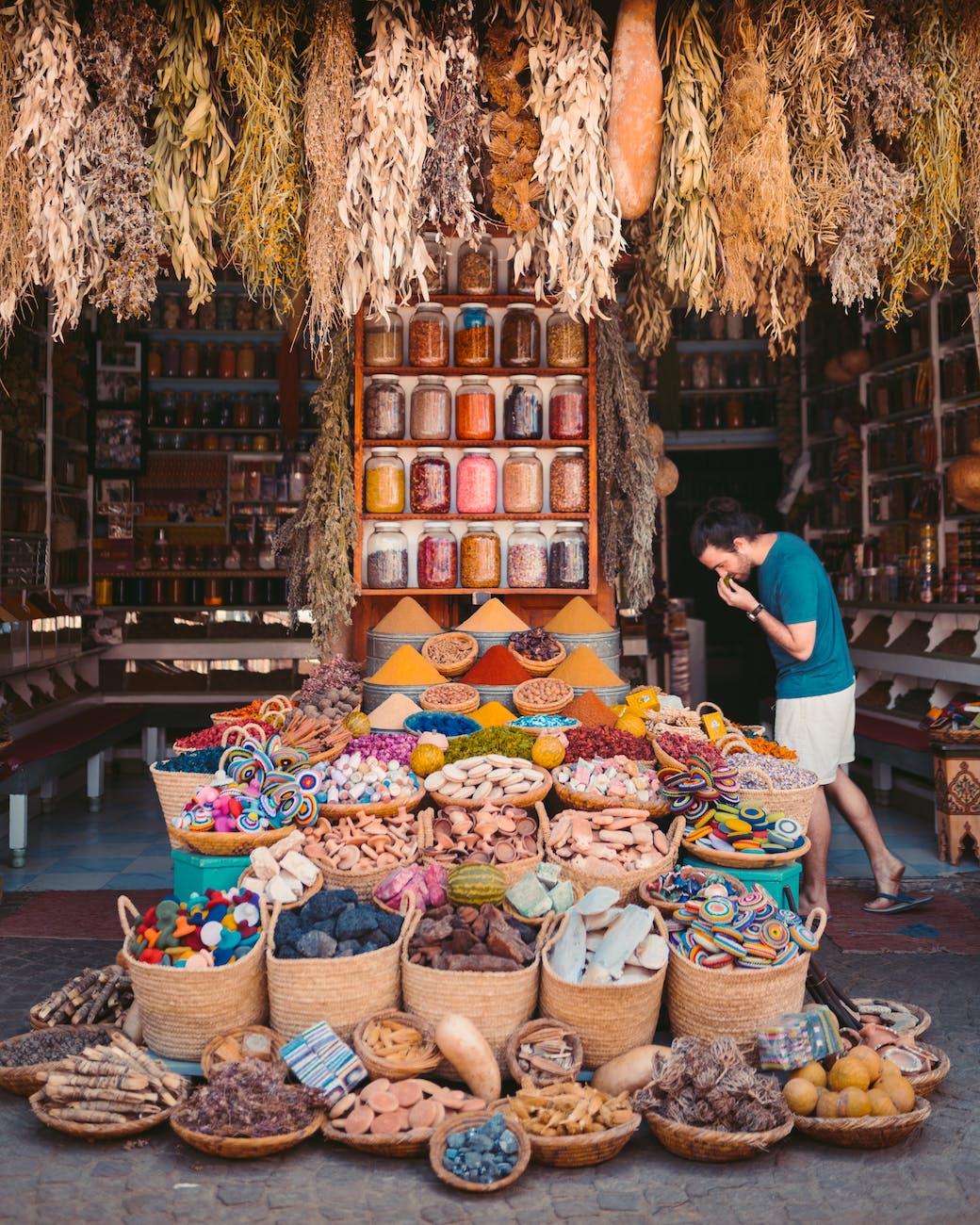
Morocco today
Despite periodic unrest through their reign, the ‘Alawi Royal family survives on the Moroccan throne until today.
- After Mohammed V passed away(1961), his son Hassan II succeeded him. Hassan in turn died in 1999, after which Mohammed VI took over. Being the 23rd ‘Alawi monarch on the throne of Morocco.
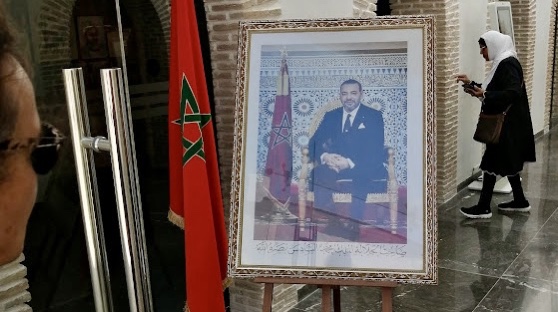
Everywhere you go, you’ll find the official portrait of the King of Morocco, Mohammed VI.
Under Mohammed VI the wish to modernise & westernise continued. Always hand in hand with Islamic customs & traditions.
- Talking to many locals during our trip the king seems highly popular. Mainly because most Moroccans deem him responsible for modernising the country – building roads, schools & hospitals. As well as keeping the country safe.
However – although, ever since the 1956 indepedence – promises were made, certain (universal) human rights & liberties weren’t & aren’t always respected. Think in this case – for example – about the freedom of the press, women’s rights & political freedom.
- During the Arab Spring in the early 2010s, protests against the Moroccan government broke out. Although the regime survived this revolutionary period within the Arab World, it had to make certain concessions, like reforming the political system, as well as improving the rights for women, the Berbers & others.
Although on every world map it seems like Morocco’s borders stand, there’s still friction about its southern border with Western Sahara – formerly Spanish Sahara – which is claimed by Morocco. A conflict which also involves other neighboring countries, like Algeria & Mauretania, as well as the International Community.
Another problem – which is actually much older – is the high amount of Moroccan emigrants. People who fled their country because of economic reasons. Crossing the Street of Gibraltar – legal or illegally – for a better future in Western Europe.
A situation which not only caused problems at home, but also in the “guest”-countries (mainly in France, Spain, Italy, the Netherlands, Belgium, Germany). First of all, because of racism, but also because of the clash of cultures with the local inhabitants as well as within their own families. A problem which survives until today.
The history of Morocco in a few words
The eventful history of Morocco today results in a multicultural society which you can enjoy, admire & study during your visit to this fascinating country. Few countries showcase so many different faces & cultures as the Moroccan society. By learning of its past you know why.
Besides its Berber roots, Morocco was visited by many people from other parts of the world. Mainly because of its unique location it was early on visited by the first explorers along the Mediterranean coastline: Phoenicians & the Greeks & then the Romans.
Later on – in the 8th century – followed by an Arab occupation which would change the country forever, becoming Islamic.
Because of the tolerance the muslims generally showed to other cultures & religions, Morocco became also a place of refuge for many other populations. Especially the Jews, who at certain times even played a key role in the country’s politics & economy.
Although European invasions took place from the 15th century, it was only in 1912 the country became – temporarily though – a French & Spanish protectorate. Until independence was again obtained in 1956.
All in all, Morocco has a long eventful history. Set in a beautiful country. Wonderful imperial cities built around & composed of medinas, mosques, palaces, madrasas, royal gardens, kasbahs…

Main gate to the medina of Fez, Morocco.
All worth your visit, as I will show you in the following serie of posts about Morocco:
Click on their names to go there:
- Tips & Ideas for your visit to Morocco
- A visit to the Imperial city of Fez & around
- Chefchaouen, the Blue City
- A visit to Tangier & Asilah

For an overview of all travel posts of my blog, go to: the Home Page.

